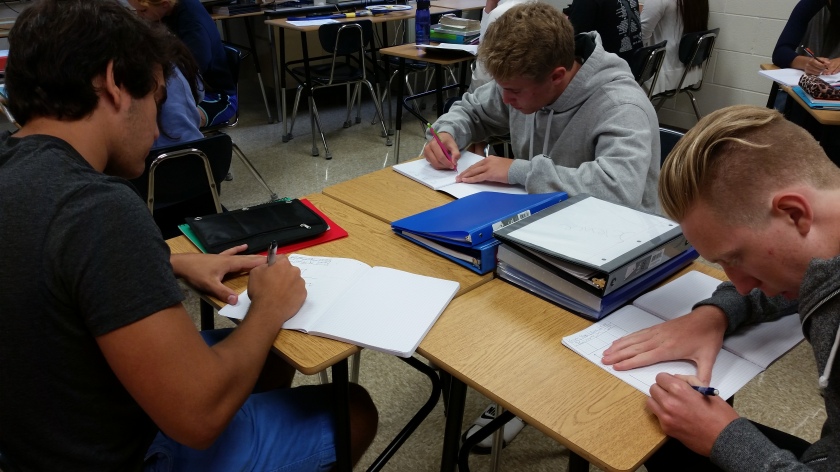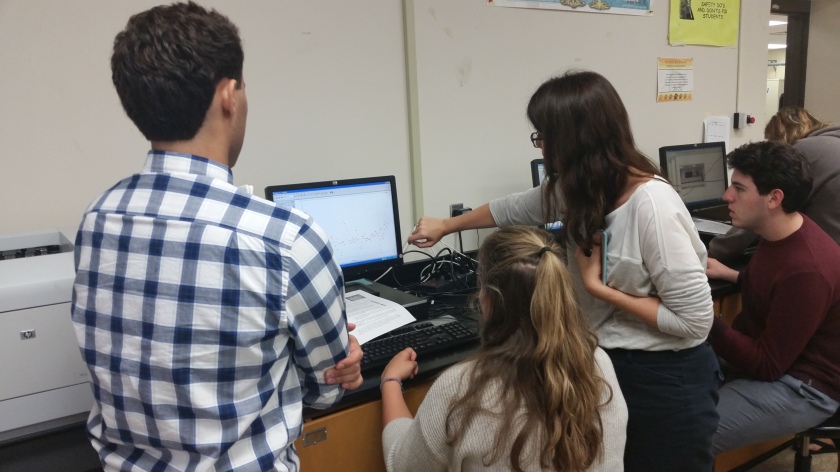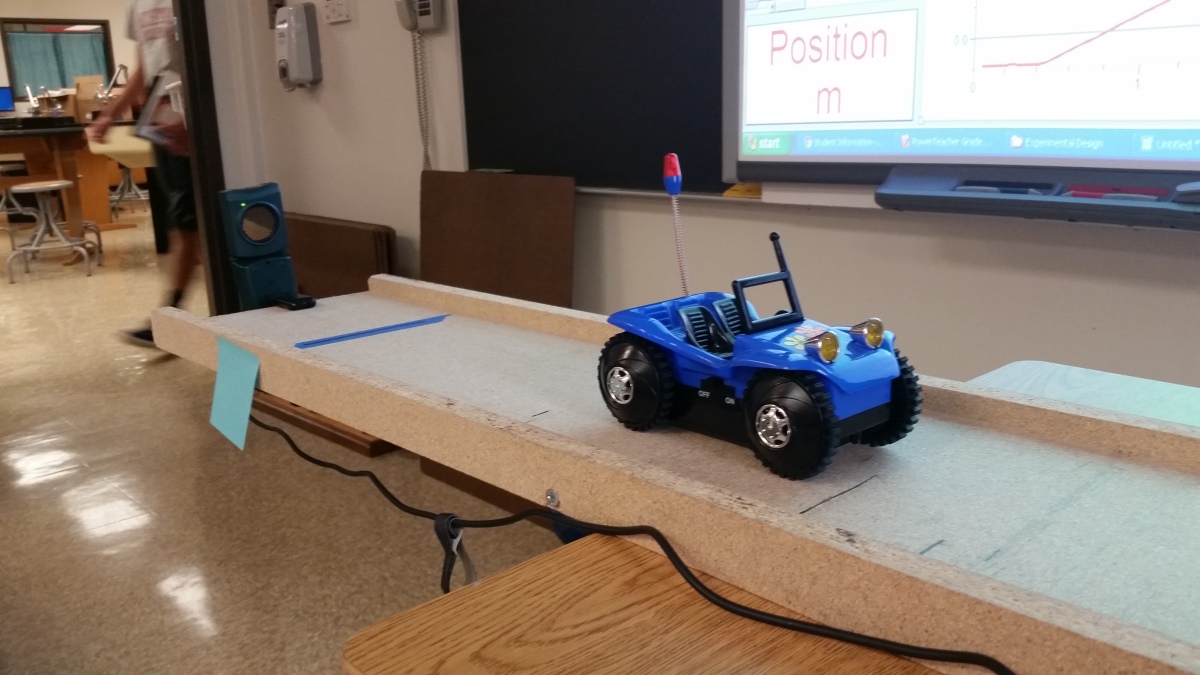Read all the way to the bottom for cool links!
To begin today’s two-period exercise, Southview science teacher Blythe Tipping plays with a toy. A blue motorized car, to be precise. As students watch, she places the car on a track in front of a Vernier sensor and lets it go. On the SmartBoard behind her, a graph appears charting the movement of the car. This simple demonstration is not quite as simple as it may seem. Blythe’s introduction is based on a system of simple tools and specialized hardware. The goal? To empower her physics students to act like scientists.

Blythe teaches physics to a group mostly composed of Southview seniors, and in designing her lessons, she always keeps in mind the students’ experience of real scientific work. Today’s lesson asks students to collect and collate data as any scientist would. To do this, students record a moving object in full video, feed that video into software called Logger Pro, and generate graphs that present data on the movement of the object. Originally, Blythe planned to take her students outside to record cars on Sylvania Avenue, but a sudden rain shower forced her to improvise. Instead, students recorded each other walking in the Southview commons.

The lesson is clearly designed and simple to follow. Students use their phones to video record each other walking in the pit of the Southview commons, a meter stick in frame for reference. Students then send that video file to their email to download on desktops back in the lab. Once on the desktop computer, students feed the video into LoggerPro, where they can run several graphs of analysis. The students print, cut, and tape the graphs into composition books where they take notes and make calculations on the graphs.

The process is simple to follow, but the workflow that results is masterful. Blythe weaves familiar and unfamiliar technology into a system of scientific inquiry that places students in an active, but not overwhelmed, position. They are playing scientists, collecting and collating data, but what’s truly beautiful is the way students move from a demonstration using vernier sensors on specialized equipment to the data gathering power of their own phones. It’s a move from specialized technology to generalized technology. The same move as when students go from paper composition books to Logger Pro graphs and back to paper. The contrast between simple toy car and sophisticated sensors in Blythe’s introduction is a running theme for the lesson, where all tools, simple and sophisticated, are in play.
The impact? Technology disappears. It becomes an unnoticed tool, and the science content shines forth. Students experience and practice scientific inquiry. They do not focus on technology. Blythe has done what should be done with technology, used it to create authentic learning.


And the specialized equipment she uses? The Logger Pro software requires a site license, but Blythe explains that the company is friendly to schools. The cost is low. Unfortunately, the cost of the Labquest device Blythe used to measure the movement of the toy car is not. The Southview science department has secured ten of these units, and Blythe uses them with peers like Joe Duffey and Don Murad, who also make extensive use of them. A mix of parent club funding and the awards given to science research students have made these specialized tools available for the department.
Blythe’s work is merely an example of how science teachers in the district are taking technology and using it to create true student learning. Each student leaves her class having been a true scientist, and when they encounter their next scientific exercise, they will understand the flow from writing to movement to technology to thinking and back again.
Check out these links for more information!
Contact Blythe Tipping to ask about her lessons at btipping@sylvaniaschools.org.

